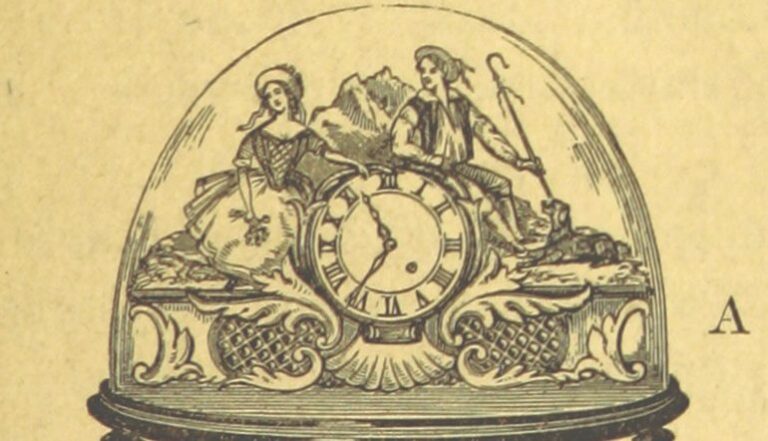Asian American Inscrutability in Joan is Okay

The eponymous narrator of Weike Wang’s second novel Joan is Okay, out earlier this year, is a Chinese American intensivist working in a New York City hospital, and she is everything I am afraid of becoming: the stereotypical socially inept, workaholic Asian. Joan finds a home in the ICU, where she has full reign over ventilator settings and the patients are sedated, and thus incapable of communication. She defines people by their height and weight, and judges them by “how much space a person takes up and how much use that person provides.” Her apartment is devoid of furniture and decorations. She finds receiving compliments and hugs to always be awkward. She is a Chinese American version of Albert Camus’ Meursault, apathetic towards team drama and contentedly isolated in the world of institutional medicine, stirred into emotional action only by the death of a parent.
Like in Camus’s 1942 novel, The Stranger, one of Wang’s most-loved, the funeral held in Shanghai for her father is almost an afterthought for Joan; she stays in China for just a weekend because she cannot tolerate taking any additional time off. In her youth, Joan sees a school counselor because she does not smile enough. In her adult years, her colleagues scold her for not grieving in the right way, while HR is concerned that she is working too many hours. The hospital director, in contrast, extols Joan as “a gunner and a new breed of doctor, brilliant and potent, but with no interests outside work and sleep.” In other words, Joan is treated by American society as a cyborg. The director even compares her to a cassette tape. She is considered a worker of superhuman competence, whose capability for emotions is unknown and unconsidered.
When I was a pre-medical student, I was constantly reminded by doctors and classmates that I did not have to go into medicine. The implication was that my career path had been set at birth by immigrant parents who indoctrinated me into the myth of upward mobility and its promise of financial security and social approval. Like Joan, I was believed to be a puppet lacking intrinsic motivation—which also meant that I was considered to be incapable of feeling empathy toward my patients. Reading my face as stoic and submissive, people assumed that I would pursue only the medical specialties that did not involve direct patient care: pathology, radiology, anesthesiology. This both alienated me and made my racialized-self more legible. Much of the humor in Joan is Okay relies on this irony, where the move to define Asian American minds with the lexicon of whiteness ultimately serves to reduce and dehumanize.
Wang’s narrative is told in deadpan, sparse prose without chapter breaks, as if the story was one long breath. A similarly enigmatic Chinese American voice narrates Wang’s debut novel, Chemistry (2017), in which the nameless protagonist, a chemistry graduate student, can only conceive of romantic love in terms of catalysts and rates of change. For Wang’s characters, the language of work is entangled with literary style. They speak like robots because they work like robots. This trope, of course, is used to describe doctors at large, but widespread racist beliefs about the mechanical nature of Asian Americans means it affects us in particular. When I was in medical school, I was regularly told to be “less serious” by supervisors. (I was also asked by patients, when I began rotating during the pandemic, whether I spoke English, and whether I had been to Wuhan, China.) And, as is the case with Joan, our supposed disposition for inscrutability is diagnosed as a coping mechanism for intergenerational trauma.
The history of American literature and cinema is rife with examples of this sort of Asian alterity—the opaque, controlling mother in Maxine Hong Kingston’s The Woman Warrior (1976); the polite Japanese gentleman in Chang-rae Lee’s A Gesture Life (1999); the misty, techno-orientalism in cyberpunk films like Bladerunner (1982); and the literal Asian robots in the new movie After Yang, to name just a few. In her recent work of narrative theory, Alterity and Empathy in Post-1945 Asian American Narratives (2021), Hyesu Park traces the historical origins of Asian and Asian American inscrutability, which continues to burden racialized bodies and minds that are simultaneously invisible and hypervisible. She emphasizes a 1931 report by the American scientist Thomas Garth that laid the groundwork for the deceptively favorable “model minority” myth when he reported that the “racial IQs” of Chinese and Japanese people were only negligibly different from whites, placing Asians above other people of color in terms of “intelligence.” Garth also remarked, however, on the “feeblemindedness” of Asian Americans, who were “less vivacious, with emotions and passions less evident”; our larger brains, he believed, led to “delayed sexual maturation” and “complex interdependent social grouping.” These are the roots of the double-sided Asian American stereotype: we are docile and affectless while also threatening in our scheming smarts and ruthless efficiency.
Asian American authors like Wang have paradoxically adopted these stereotypes and constructed superficially inscrutable characters like Joan in an attempt to reclaim the complexity of Asian American people from the dominant force of whiteness in literature. Whiteness normalizes a form of default reading that attempts to annex defiant minds under its domain of cognitive knowledge. Fiction that reproduces the most intimate, subjective experiences must, if it seeks to recover ethical integrity, simultaneously appeal to and resist this instinct to possess and master. In order to retire racist stereotypes, Park writes that “one is obliged to first evoke them; in order to construct ethnicity, one must first critique what is falsely reported as one’s ethnic identity.”
Wang’s broader project is to develop ways for her characters to find success that cannot be tied down to their identities, while also recognizing the multifaceted obstacles those identities present. The other characters in Joan is Okay see Joan as an ominous outsider. Through fiction’s unique capacity for openness, however, readers have access to a Joan that is not so absurdly detached. For example, in the novel’s opening scene, an entitled male patient questions Joan’s qualifications, calling her a mouse and demanding to know her age and educational background. In a measured response, she tells him off, stating that he could go to another hospital, but his care would not change. When Joan’s brother Fang, a hedge fund portfolio manager, proposes that she ought to marry a senator for political connections, she comments to the reader: “The famed MRS degree, because in practice, a female brain is worth nothing. Four lobes of the cerebrum, and I have sometimes imagined one of mine labeled RAGE.”
As a woman of color in medicine, Joan is not allowed to be freely upset like her white and/or male colleagues or friends, although they work hard to get her to vocalize the ways she has been discriminated against to make her silent demeanor more decipherable to them. A pivotal example is when her white neighbor Mark—an impulsive over-reacher and cultural gatekeeper of what it means to be an intellectual New Yorker—rails against the pressure placed on her to take a “one month leave of bereavement” after her father’s death. In a grand performance of social awareness, he tells Joan that she should “feel cheated.” Appealing to the model minority myth, he points out that “Asians have already proven that they’re assiduous, compliant, and competent, but then in interviews, in real workplace settings, they must also prove to their colleagues and superiors that they have some semblance of a personality, else they immediately get classified as robotic.” In Mark’s eyes, HR was acting as a wellness Big Brother, not considering that “some Asians seem stiff because of differing cultural norms and expectations.” His lecture infuriates Joan. She wants to cover her ears and walk out of the conversation; but again, she keeps her anger bubbling just beneath the surface.
We also learn that, having grown up poor in Oakland, CA, Joan views achievement in medicine not as a fulfilment of an expectation, but as an embrace of meritocracy and the equalizing power of standardization. She downplays her race, gender, and class background because these factors invite a reading that detaches success from her work ethic and actual intelligence. She tells us that “the joy of having been standardized was that you didn’t need to think beyond a certain area. Like a death handled well, a box had been put around you, and within it you could feel safe.” Joan enjoys being a cog in the wheel: “It wasn’t glory that had drawn me to health care work but the chance to feel pure and complete drudgery in my pursuit of use.” She explains that intensivist work is compelling, not because she hates patients, but because the rapid turnover of cases places a demand on providers to always give it their all.
When she hears the news of her father’s death from her mother over the phone, Joan says a Chinese word: “chuàng.” Her coworkers ask what the “strange sound” she had uttered was. Not wanting to encumber the team with her family issues, she brushes it off as meaningless. But the word, and Mandarin Chinese in general, is not meaningless; in fact it is deeply important to how Joan maintains a connection with her father throughout the novel. She explains the anatomy of Chinese logograms for the reader, generously spelling out the significance of each component that makes up her name and chuàng, a favorite exclamation of her father’s that means “to create something that never was.” Late into the novel, during Joan’s longest meditation on her father’s life, she remarks that chuàng could have many meanings; she had never asked her father which one he had intended. Could he have used “chuǎng” to mean breaking down barriers? Only in this indeterminate space does Joan finally say goodbye to her father. Like Wang’s vision of fiction, in grief Joan discovers that inscrutability can be possibility itself.


